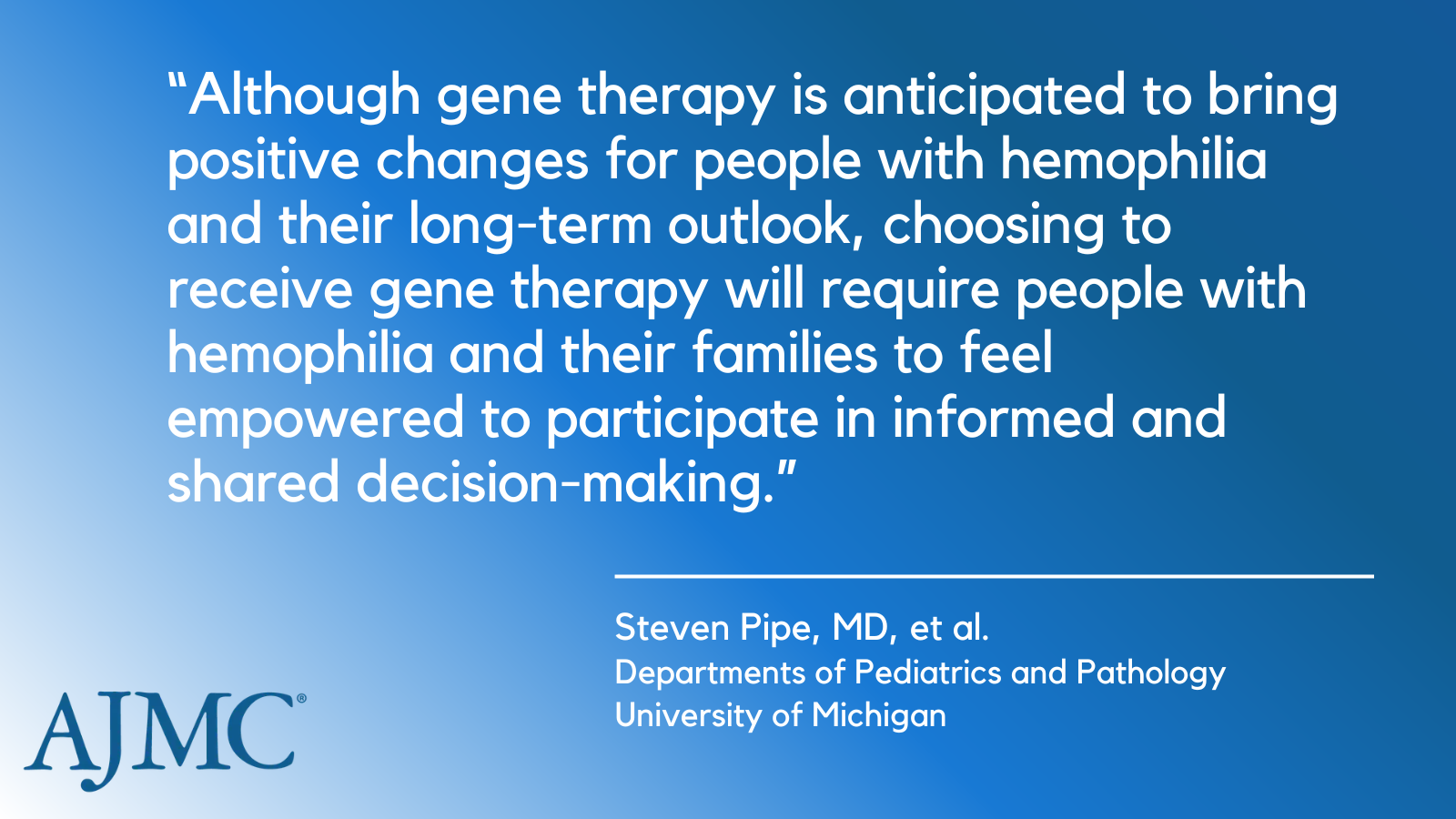- Center on Health Equity & Access
- Clinical
- Health Care Cost
- Health Care Delivery
- Insurance
- Policy
- Technology
- Value-Based Care
The Framework for Embracing Gene Therapy in Hemophilia Treatment
Although gene therapy is anticipated to bring positive changes for people with hemophilia, choosing to receive gene therapy will require empowerment, participation, and shared decision-making, investigators write.
Doctor using digital technology | Image credit: otello-stpdc - stock.adobe.com

Gene therapy brings a new era for hemophilia treatment, challenging health care providers (HCPs) and patients to adapt to a supportive paradigm.
The successful implementation of gene therapy for hemophilia hinges on effective communication and collaboration, investigators emphasized in a new review article published in Haemophilia.
According to the article, hemophilia treatment centers, HCPs, patients, and various stakeholders must synchronize their efforts with transparent discussions, robust education, and a deep understanding of individual patient needs.
In the evolving landscape of medical advancements, the emergence of adeno-associated virus (AAV)–based gene therapy brings a transformation to the treatment of hemophilia among adults. Treatment centers and HCPs are at the frontier of this cutting-edge therapeutic approach, which requires adaptation and preparedness for a new treatment journey for patients and institutions.
“While principles in this publication reflect experiences and expertise leveraged from US hemophilia treatment centers, concepts discussed within may have applicability for facilities and teams involved in the management of hemophilia patients across the globe,” the review stated.
Understanding the Patient Journey
Before infusion, the patient journey begins with thorough information gathering, where patients learn about the risks and benefits of gene therapy, including lifestyle changes.

Decision-making is a critical phase and demands comprehensive education and discussion. Patient eligibility and choice play pivotal roles, accentuating the necessity for informed decision-making processes as a part of standard practice.
Following this, a detailed patient assessment will be conducted. Preparation for the gene therapy infusion involves not only physical readiness but also mental and emotional preparedness. On the day of infusion, patients will reconfirm their agreement for treatment and final eligibility will be verified.
“Although gene therapy is anticipated to bring positive changes for people with hemophilia and their long-term outlook, choosing to receive gene therapy will require people with hemophilia and their families to feel empowered to participate in informed and shared decision-making,” investigators wrote. “Not all people will hemophilia will be eligible for, or decide to receive, gene therapy.”
Peri- and postinfusion periods will entail short- and long-term monitoring, lifestyle modifications, and potential immunosuppressive treatments. Directly after therapy, the patient will continue to be observed. Long-term monitoring requires collaboration with a referral center or physician.
Institutional Adaptations for Dosing Center
Simultaneously, treatment centers must also work on integrating gene therapy into their existing frameworks. The article addressed biosafety procedures, which demand meticulous consideration to ensure the safety of both patients and health care providers. Planning for product procurement, storage, handling, and administration necessitates precision and adherence to protocols.
- Biosafety considerations
- Lab practices
- Safety equipment
- Facility construction
- Lab access and surveillance
- Key pharmacy considerations
- Risk assessment
- Procurement and receipt
- Storage
- Preparation
- Documentation and disposal
- Development of therapy-based protocols and guidance documents
- Eligibility criteria
- Infusion process
- Immunosuppressive management
- Nonresponsive patients
- Clinical capabilities and staffing
- Collaborative care between dosing and referral center
Detailed protocols and guidance documents are imperative to the institutional journey. Contingency planning for managing immunosuppressive treatments and hemostatic requirements also needs to be incorporated.
When it comes to staffing, the evaluation of clinical capabilities and the training of staff are necessary to meet the demands of the treatment. The article also stated the coordination of efforts across multidisciplinary teams and seamless collaboration between various centers is pivotal for the success of gene therapy implementation.
“As current electronic medical record systems don't allow full interaction/sharing between sites, hemophilia treatment centers will also need to identify a streamlined process for appropriately exchanging the necessary health information (including eligibility assessment and laboratory results) between the referral/follow-up center and the dosing center,” investigators wrote.
Reference
Pipe, S, Douglas, K, Hwang, N, Young, G, Patel, P, Fogarty, P. Delivery of gene therapy in haemophilia treatment centres in the United States: Practical aspects of preparedness and implementation. Haemophilia. Published online September 25, 2023. doi:10.1111/hae.14867
